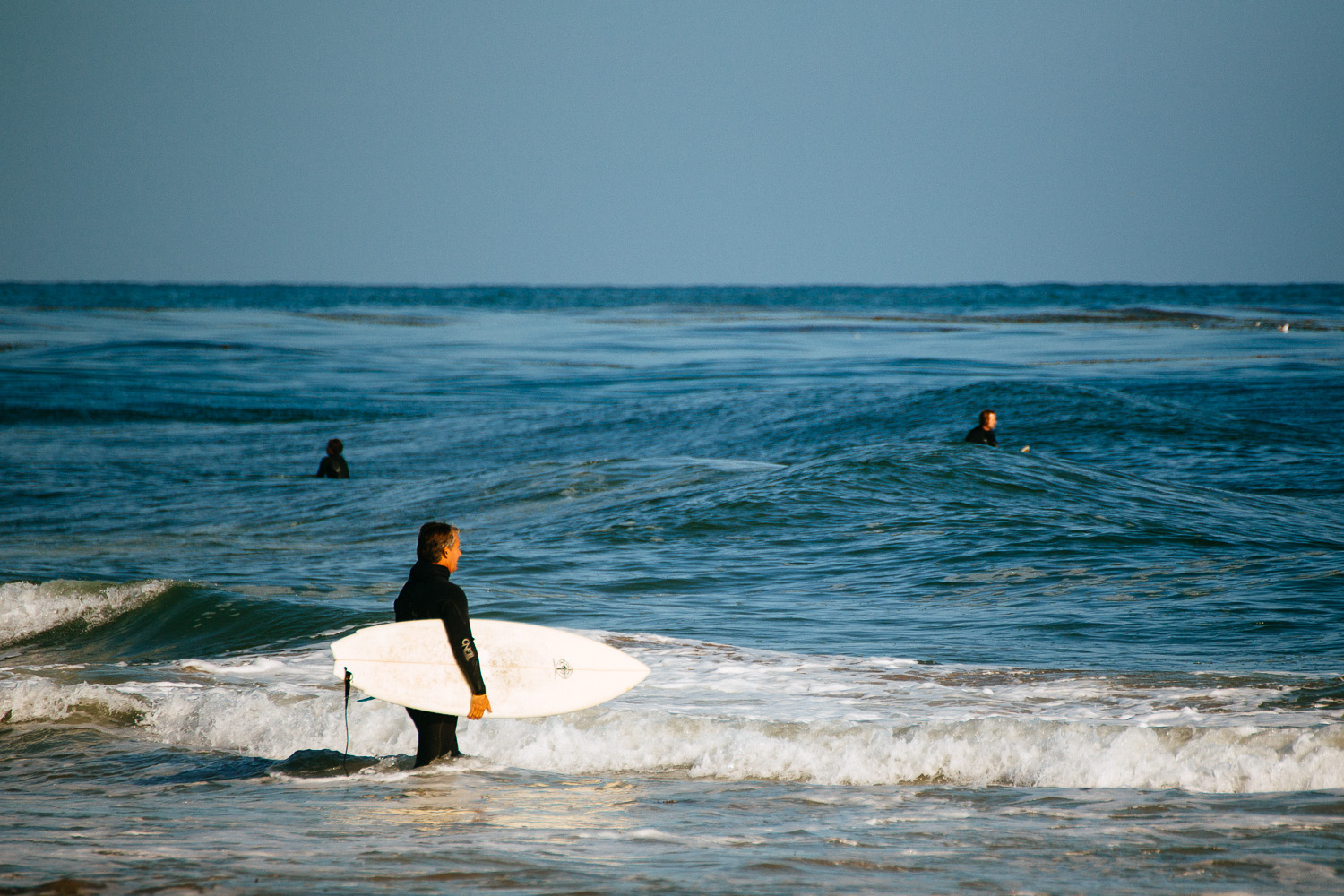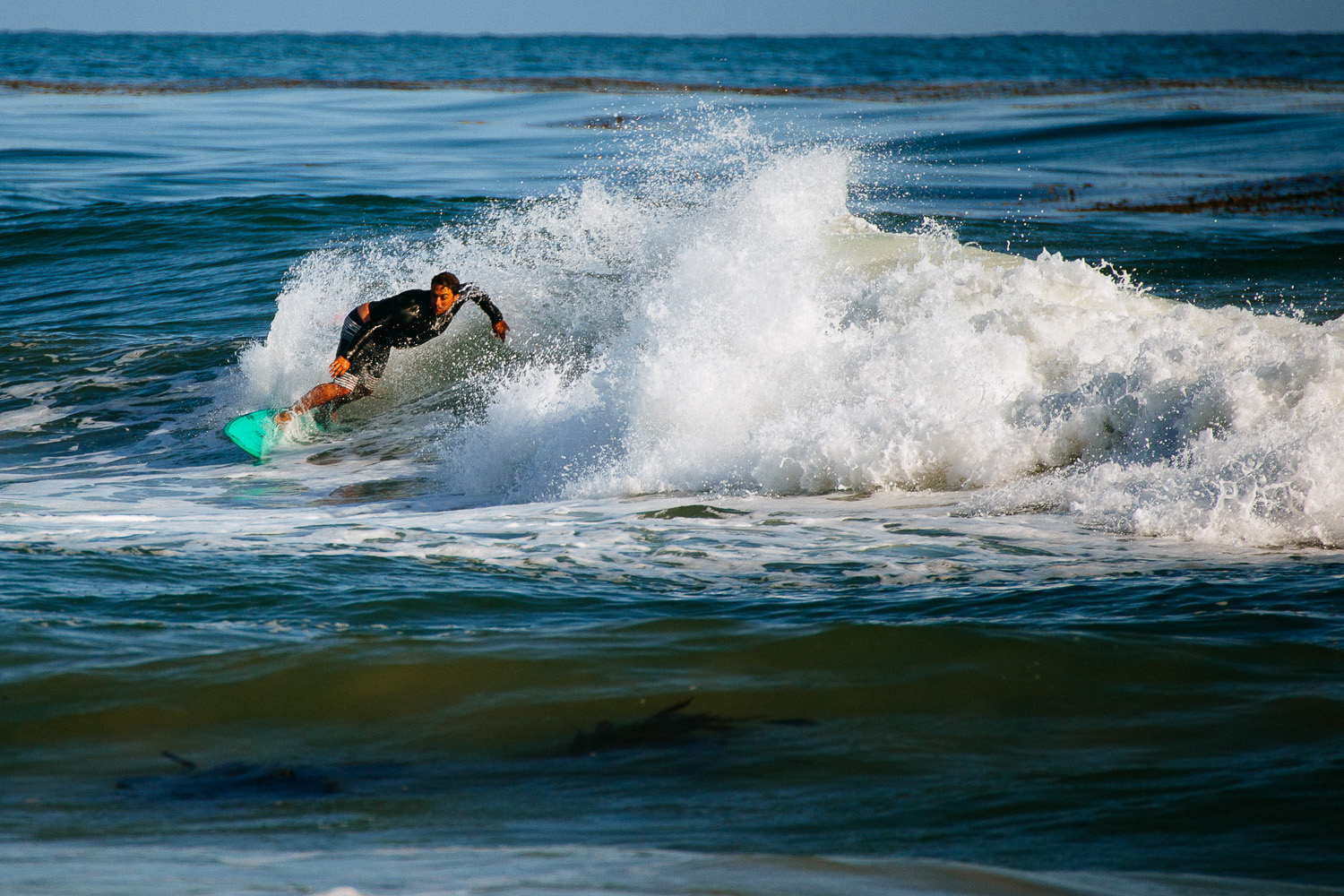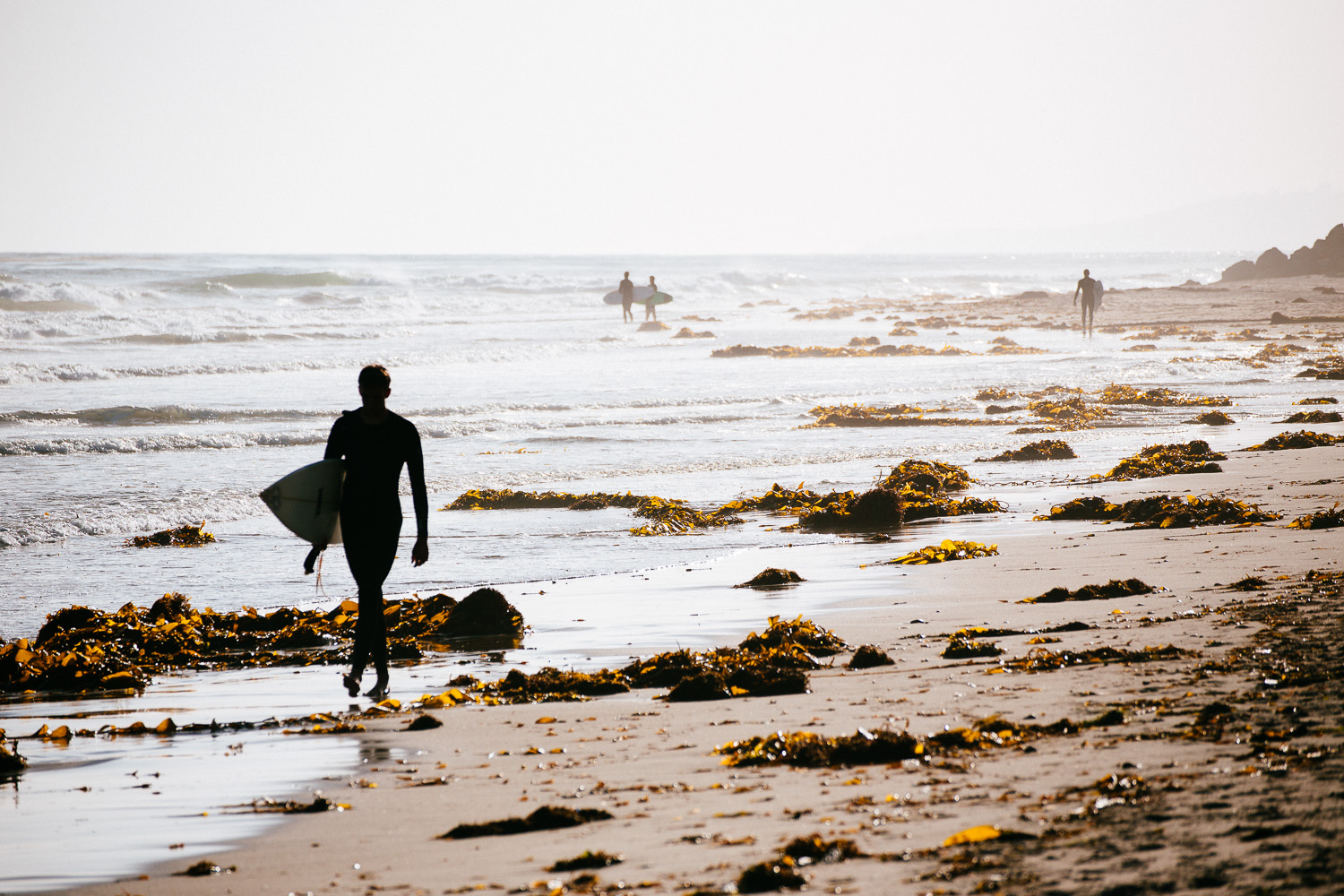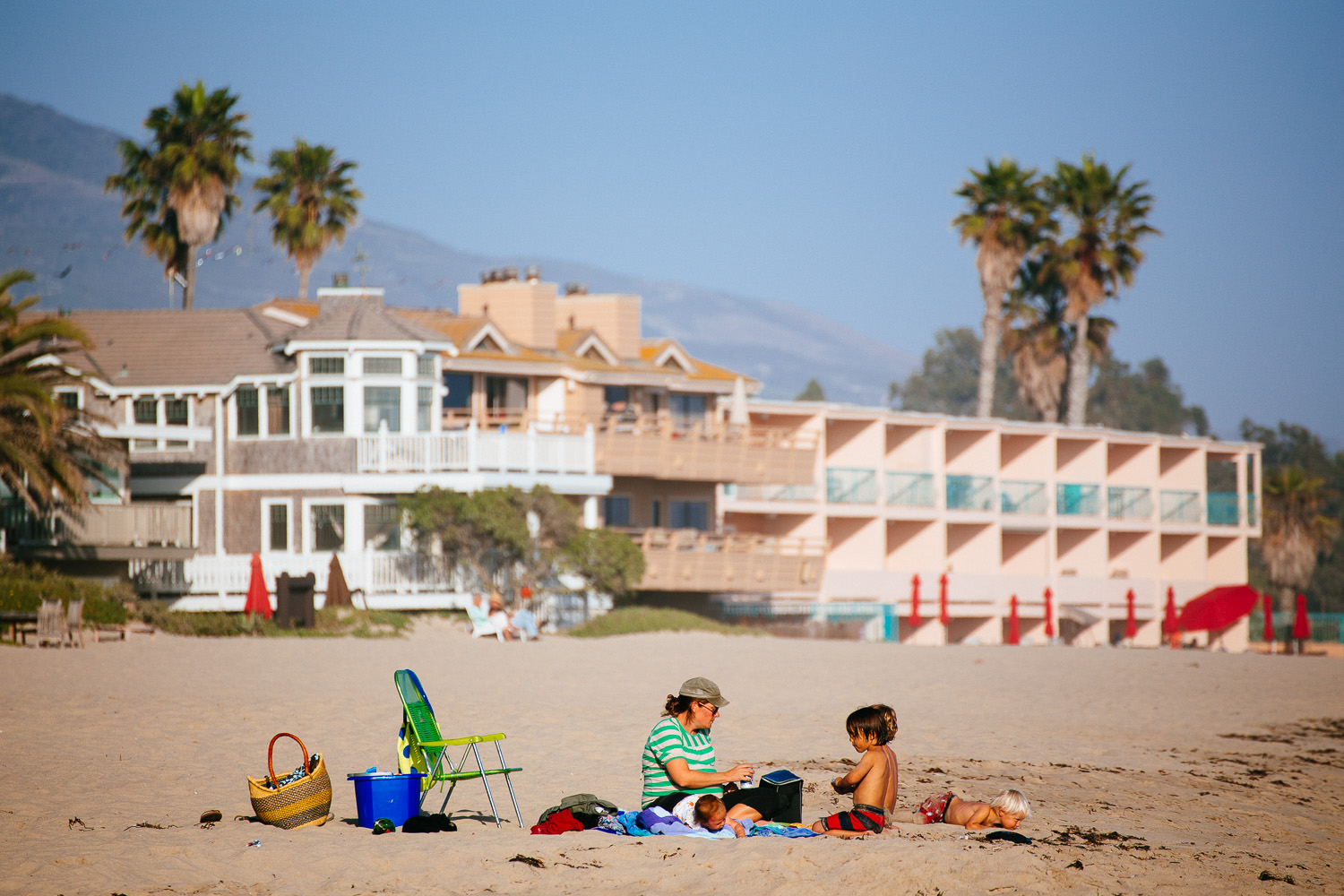 Canon EOS 6D (300mm, f/5.6, 1/1000 sec, ISO160)
Canon EOS 6D (300mm, f/5.6, 1/1000 sec, ISO160)
Always be prepared! Sometimes it’s great to travel light and leave most of your gear at home but sometimes you should bring your very best. Sounds reasonable, the only problem is that you never know when to bring the good stuff.
I had no special shots in mind when I took my camera for an evening walk at the Carpinteria beach but since my Canon 6D was new I took it together with the 24-70 IS and the 70-300VC from Tamron. Just in case I would see some pelicans or dolphins like the last time I have been there in 2010. However I didn’t bring my 70-200 IS II plus the 1.4TC because of weight. Which of course was a mistake!
 Canon EOS 6D (300mm, f/5.6, 1/500 sec, ISO100)
Canon EOS 6D (300mm, f/5.6, 1/500 sec, ISO100) Canon EOS 6D (300mm, f/5.6, 1/500 sec, ISO100)
Canon EOS 6D (300mm, f/5.6, 1/500 sec, ISO100)
 Canon EOS 6D (300mm, f/5.6, 1/400 sec, ISO100)
Canon EOS 6D (300mm, f/5.6, 1/400 sec, ISO100)
I was presented with almost tame snowy egrets and an arctic tern. I immediately regretted my decision to take it easy but it could be worse. On my 2010 vacation I only took my NEX 5 with the kit lens. Not the best combo for birding. While the 70-300VC on a full frame camera wouldn’t be of any use for birding in Austria it is good enough for wildlife and birding here. I’m always amazed how simple it is to get good bird and wildlife shots in Canada or in the USA. No need for an ultra tele lens or hide. Just shoot with what you have on hand.
 Canon EOS 6D (300mm, f/5.6, 1/1000 sec, ISO100)
Canon EOS 6D (300mm, f/5.6, 1/1000 sec, ISO100)
 Canon EOS 6D (300mm, f/5.6, 1/1000 sec, ISO125)
Canon EOS 6D (300mm, f/5.6, 1/1000 sec, ISO125)
At the beginning I wasn’t very optimistic because of my experiences with the Canon 5D I owned before. It was a very slow camera. The Tamron is a fine lens but AF is slow even compared to Canons 70-300 IS ( the non-L version ).
But it proofed to be good enough. Initial focus was fast and even tracking worked as long as the bird didn’t fly towards me. The 6D is still no camera for wildlife and sports but I big improvement over the 5D.
 Canon EOS 6D (300mm, f/5.6, 1/1000 sec, ISO100)
Canon EOS 6D (300mm, f/5.6, 1/1000 sec, ISO100)
 Canon EOS 6D (300mm, f/5.6, 1/1000 sec, ISO125)
Canon EOS 6D (300mm, f/5.6, 1/1000 sec, ISO125)
 Canon EOS 6D (300mm, f/5.6, 1/1000 sec, ISO160)
Canon EOS 6D (300mm, f/5.6, 1/1000 sec, ISO160)
And on my way back I saw some good surfers too. One would think that there are no bad surfers in California but that is far from the truth. I tried to shoot surfers a couple of times and they hardly managed to stay on the board long enough to allow me to take some images. At least some of those guys were really good.
Once again the 6D was good enough to get me some nice shots but it wasn’t able to compensate for my mistakes! I shot wide open at 1/1.000s to freeze the action but I should have chosen 1/4.000s instead. There was plenty of light and the fastest shutter speed would have helped with sharpness especially of the water drops in the shot above. Next time I know.
 Canon EOS 6D (300mm, f/5.6, 1/1000 sec, ISO160)
Canon EOS 6D (300mm, f/5.6, 1/1000 sec, ISO160)
 Canon EOS 6D (300mm, f/5.6, 1/1000 sec, ISO100)
Canon EOS 6D (300mm, f/5.6, 1/1000 sec, ISO100)
 Canon EOS 6D (259mm, f/5.6, 1/1000 sec, ISO100)
Canon EOS 6D (259mm, f/5.6, 1/1000 sec, ISO100)
 Canon EOS 6D (183mm, f/5.6, 1/2500 sec, ISO100)
Canon EOS 6D (183mm, f/5.6, 1/2500 sec, ISO100)
The other thing I have learned is to bring the best gear when on such beautiful location. Very often there is no second chance and even though my 70-200 IS II would not have taken completely different images it would have helped with much faster AF and better subject to background separation in some of the shots. The Tamron is really good and if money is tight or if you must travel light it is a great solution but it is no substitute to the 70-200 IS II.
Before I got the 70-200 IS II I also thought about getting the 70-300 IS L. But even though I have no doubts that the 70-300 IS L is an excellent lens I’m glad that I went to other route. Even if I will use it with the 1.4TC converter a lot it is still 1 stop faster which doesn’t seem to be a big deal today but it is because it gives better subject to background isolation that can make a big difference in a lot of shots. The Tamron 70-300 VC will give you exactly the same background blur than the 70-300 IS L for a fraction of the cost and a much lower weight. I don’t want to talk anybody out of getting the 70-300 IS L but I recommend to think about the other options too.
 Canon EOS 6D (259mm, f/5.6, 1/1000 sec, ISO100)
Canon EOS 6D (259mm, f/5.6, 1/1000 sec, ISO100)
 Canon EOS 6D (96mm, f/5.6, 1/400 sec, ISO100)
Canon EOS 6D (96mm, f/5.6, 1/400 sec, ISO100)
Above I wrote that I regretted that I left my good lens at home that day but that is almost not fair to the Tamron. This is a really good lens. It’s a lot cheaper than the standard 70-300 IS from Canon but it is almost as good as the 70-300 IS L which costs about 4 times the money! A true bargain!
I got the 70-200 IS II because of its constant aperture of f2.8. The fast aperture allows to separate the subject from the background almost as good as on a portrait prime lens. So on its own it acts as a portrait lens, combined with the 1.4xTC it works as a 4/280mm tele lens (a substitute for the 4/300 IS ) and with the 2.0TC it’s a substitute for the 100-400 IS. Instead of a couple of lenses you just need this one. The same is true for the 2.8/24-70 II. It replaces the fast primes when traveling. I know that it won’t give me exactly what I get from primes but almost. And almost is good enough for me. Better than the best prime lenses sitting at home while I’m traveling with slow zooms.
In my photography life I went through a lot of lenses. In the beginning, when money was tight, I bought a lot of really cheap ones. Later I owned very good glass from Nikon and after the switch from Canon. I got Canons f4 IS zooms and a couple of fast primes but decided that I don’t want to take so many lenses when traveling so I ended up to keep it simple again.
Just 2 fast zooms: 24-70 and 70-200. Just the best. I plan to add the new 4/16-35 IS. That and the 1.4xTC plus eventually the 2xTC is all I will ever use when traveling.
Kind of travel light for gear heads I guess.

